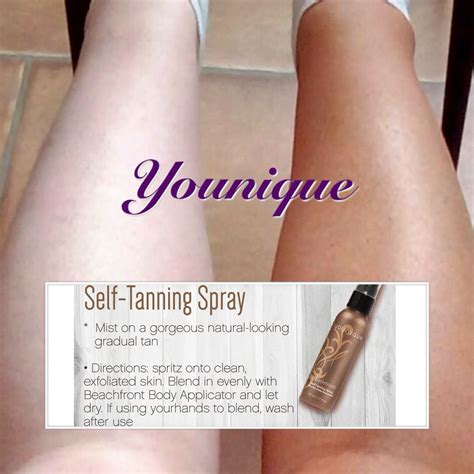Self Tanner: Get That Summer Glow Without the Sunburns
Summer's golden glow is undeniably alluring, but the sun's harmful UV rays pose a significant threat to our skin's health. Fortunately, self-tanners offer a safe and effective alternative to achieving that sun-kissed look without the risks associated with sunbathing or tanning beds. This comprehensive guide will delve into the world of self-tanners, helping you achieve a natural-looking tan while protecting your skin.
What is Self-Tanner?
Self-tanners, also known as sunless tanners, are cosmetic products containing dihydroxyacetone (DHA), a colorless sugar that reacts with the amino acids in the skin's surface to create a temporary, brown color. This reaction is entirely superficial; DHA doesn't penetrate deep into the skin and doesn't offer any protection against the sun. It simply provides a temporary coloration that mimics a tan. The color develops gradually, usually within a few hours, and lasts for several days before gradually fading.
How to Choose the Right Self-Tanner
The market offers a wide variety of self-tanners, each with its own unique properties. Choosing the right one depends on your skin type, desired level of tan, and personal preferences.
Types of Self-Tanners:
- Lotions: These are the most common type of self-tanner, easy to apply and blend. They offer a wide range of shades and formulas for various skin tones.
- Mousse: Mousses are lightweight and airy, making them easy to spread evenly, particularly for those with experience applying self-tanner.
- Sprays: Spray-on self-tanners offer a quick and convenient application, but may require a little practice to avoid streaks or missed spots.
- Towel-on Tanners: These are convenient and easy to use, with less mess than other forms. However, they may not provide as even a tan as other methods.
- Gradual Tanners: These products build a tan gradually over several days, minimizing the risk of streaks or uneven color. They are ideal for beginners.
Considering Your Skin Type:
- Fair Skin: Opt for gradual tanners or lotions with lighter shades to avoid an unnatural-looking tan.
- Medium Skin: You have more flexibility in choosing shades and formulas, allowing you to achieve a deeper tan.
- Dark Skin: Look for deep tanning lotions or mousses to achieve a noticeable difference.
Preparing Your Skin for Self-Tanner Application
Proper preparation is key to achieving a streak-free, even tan.
Exfoliation:
Exfoliating your skin 24-48 hours before applying self-tanner is crucial. This removes dead skin cells, ensuring the DHA reacts evenly and preventing patchy results. Avoid exfoliating immediately before application as this can cause uneven absorption.
Hair Removal:
If you plan to shave or wax, do so at least 24 hours before applying self-tanner. This prevents irritation and ensures even color.
Moisturizing:
Avoid moisturizing immediately before application, as this can interfere with absorption. However, applying a light moisturizer to dry areas like elbows, knees, and ankles can help prevent excessive DHA buildup in these spots.
Applying Self-Tanner: A Step-by-Step Guide
- Cleanse: Wash your skin thoroughly and pat it dry.
- Apply: Start with a small amount of self-tanner and work it into your skin using long, even strokes.
- Blend: Blend thoroughly to avoid streaks and ensure even coverage. Pay close attention to areas like knees, elbows, ankles, and wrists.
- Hands and Feet: Apply a smaller amount to your hands and feet, blending carefully to prevent build-up. Consider using a tanning mitt to avoid staining your palms.
- Wait: Allow the self-tanner to dry completely before getting dressed.
Maintaining Your Self-Tanner Glow
To prolong the life of your self-tan, avoid harsh exfoliation and moisturize your skin daily. This helps prevent premature fading and keeps your skin hydrated, contributing to a more natural-looking tan.
Addressing Common Concerns:
How long does self-tanner last?
The duration varies depending on the product and your skin type, typically lasting 3-7 days.
What if I get streaks?
Gentle exfoliation can help remove uneven patches. Next time, focus on even application and blending.
Is self-tanner safe?
When used as directed, self-tanners are considered safe. Always test a small area first to check for any adverse reactions.
Can I use self-tanner on my face?
Yes, but choose a self-tanner specifically formulated for the face, as facial skin is more sensitive.
How can I remove self-tanner?
Exfoliating and moisturizing will help to gradually fade the tan. There are also specialized self-tanner removers available.
By following these tips, you can achieve a beautiful, sun-kissed glow safely and effectively, without exposing yourself to the harmful effects of the sun. Remember, while self-tanners provide a great alternative to sun tanning, they do not protect you from the sun. Always use sunscreen with an SPF of 30 or higher when spending time outdoors.

